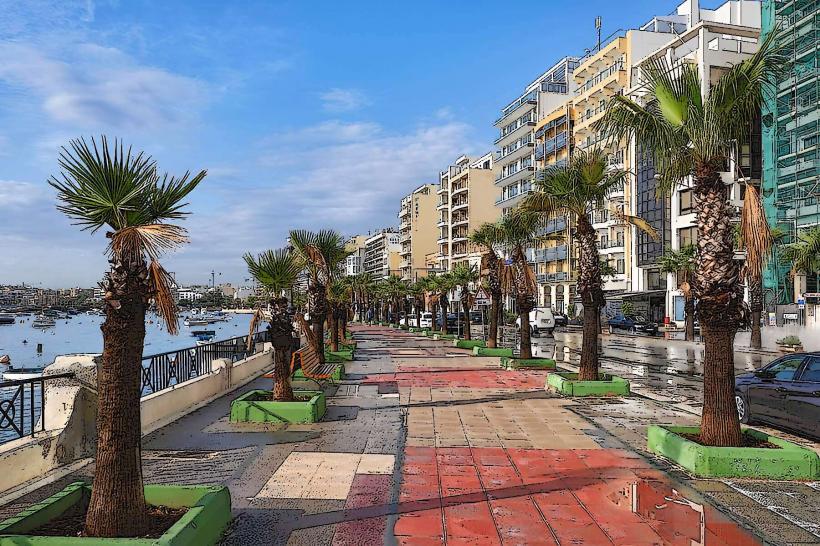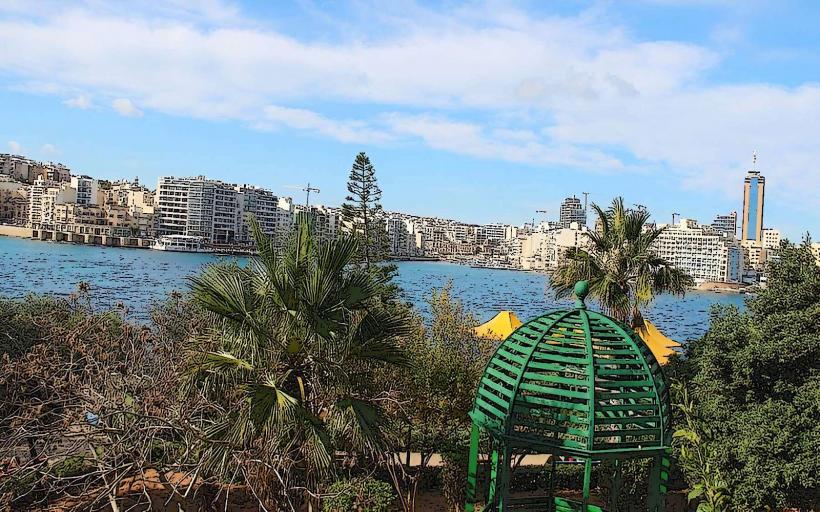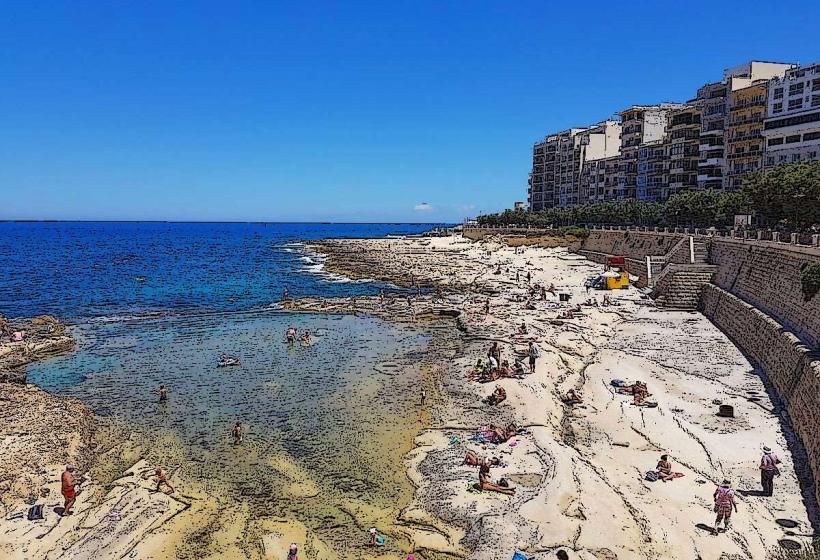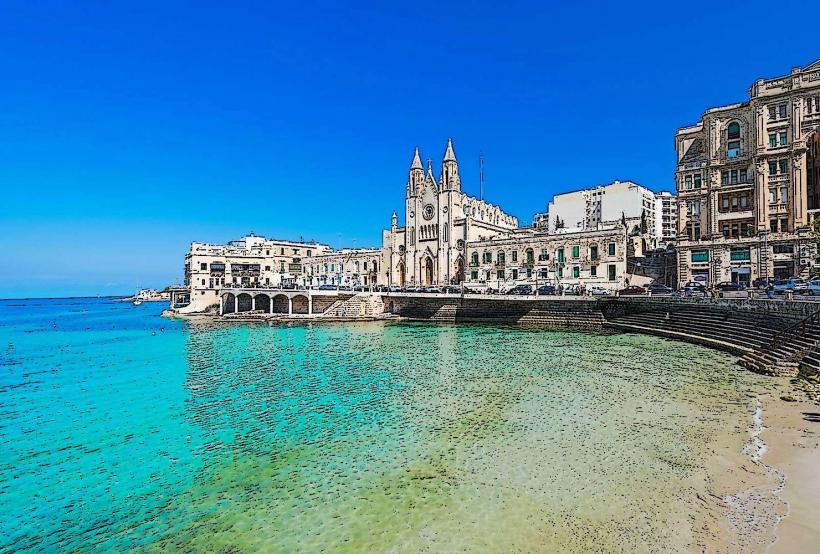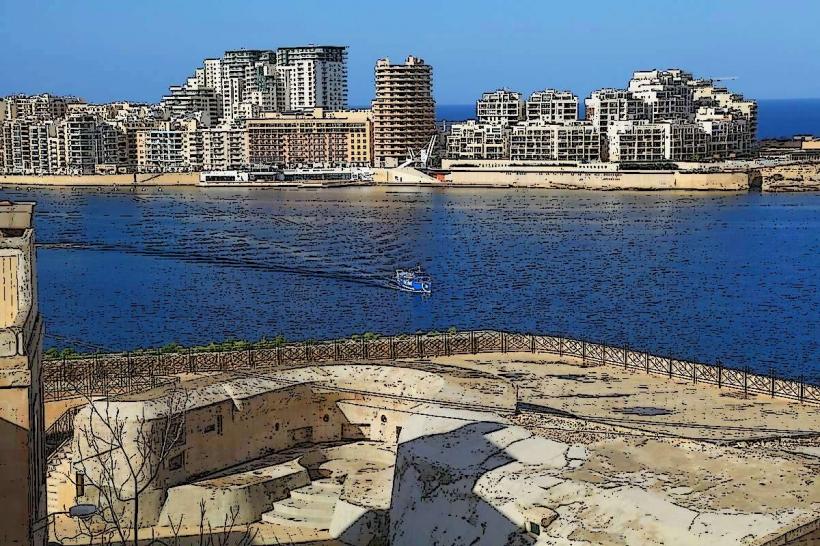Information
Landmark: Tigné FortCity: Sliema
Country: Malta
Continent: Europe
Tigné Fort is a historical fortification located on Tigné Point in Sliema, Malta. Originally built by the British in the early 19th century, the fort has served various military purposes over the years, but it is now largely abandoned and in a state of disrepair. Despite this, Tigné Fort remains an interesting landmark with historical and architectural significance.
Historical Background
Construction and Purpose:
- Tigné Fort was constructed between 1797 and 1800 by the British as part of their defensive strategy to protect the harbor and the area around Valletta. The fort was strategically positioned at Tigné Point, which allowed it to command views over the Grand Harbour, Marsamxett Harbour, and the surrounding coastline.
- It was initially part of a larger network of fortifications aimed at bolstering Malta's defenses during the period of British rule, and it was designed to defend the main harbor and prevent attacks by sea.
Architectural Design:
- The fort is built in a pentagonal shape, typical of British fortifications from the era, and was equipped with cannons and other artillery. Its structure included defensive walls, moats, and bastions, designed to withstand attacks and provide a stronghold for troops.
- Tigné Fort was intended to work in conjunction with other forts, such as Fort St. Elmo and Fort Rinella, to create a cohesive defense system for the harbor area.
Role During the British Era:
- Tigné Fort, like many other military fortifications on Malta, played an important role in the Napoleonic Wars and later conflicts during the 19th and early 20th centuries. It was part of the British military presence on the island and served as a key defensive position.
- Over the years, the fort was used for various military purposes, including as a headquarters and as part of the island's coastal defense system. However, its strategic importance diminished over time, especially with the advent of modern warfare and changes in military tactics.
Decline and Current Status
Post-British Era:
- After Malta gained independence in 1964, Tigné Fort, along with many other British-era fortifications, ceased to play a military role. The fort became increasingly abandoned and deteriorated due to lack of maintenance and modern military needs.
- In recent years, the fort has been largely neglected, and the surrounding area has been developed for residential and commercial use. The fort itself, however, remains a part of the historic fabric of Sliema.
Current Condition:
- Today, Tigné Fort is in a dilapidated state. Much of its original structure has been damaged over the years, and it is not open to the public due to its poor condition and lack of safety measures.
- The fort is partially visible from the nearby Tigné Point, but access to the site is limited, and it is mostly enclosed by private property and modern developments. The surrounding area is used for commercial and residential purposes, with little attention given to preserving the fort.
Cultural and Historical Significance
Heritage Site:
- Although Tigné Fort is not as well-known as other fortifications on the island, it remains an important part of Malta's military history, particularly from the British colonial era. The fort’s strategic position and its role in the defense of the Grand Harbour contribute to Malta’s rich heritage of fortifications.
- The fort is a reminder of the island’s historical significance as a key naval base in the Mediterranean and a vital point of defense during various periods of conflict.
Limited Public Access:
- While the fort is not open to visitors due to its condition, it can still be seen from a distance, especially from the Sliema Promenade and Tigné Point, making it an interesting part of the local landscape for those interested in the island’s military history.
Surrounding Area
- Tigné Point Development:
- The area surrounding the fort, particularly Tigné Point, has undergone significant development in recent years. Tigné Point is now home to modern residential buildings, a shopping mall, and commercial establishments. The fort is situated within this development, though it is largely ignored by the developers, who have focused on creating a modern and upscale urban environment.
- The contrast between the historic fort and the surrounding modern developments highlights the changes Malta has undergone in terms of urbanization and modernization, though the fort remains a silent witness to the island’s colonial past.
Conclusion
While Tigné Fort is no longer an active military site, it remains an important part of Malta’s historical landscape, offering insight into the island’s military past and its strategic importance during the British colonial period. Despite its current dilapidated state, the fort is a symbol of Malta's long history of defense and its role in Mediterranean geopolitics. Though not easily accessible to the public, it adds to the cultural tapestry of Sliema and provides a poignant reminder of the island's complex past.

